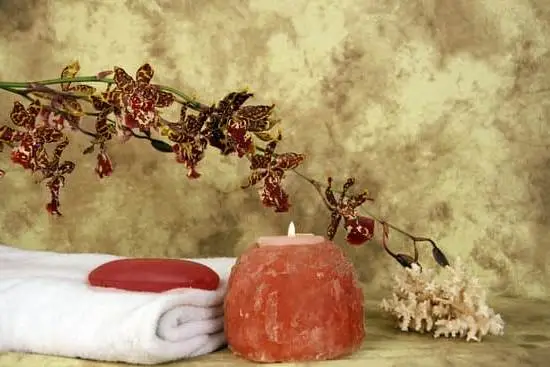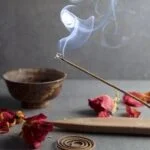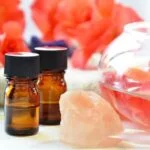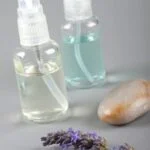Are you looking for a natural and empowering way to boost your mental and physical well-being? Look no further than the world of DIY aromatherapy inhalers. These portable and customizable tools are designed to help you harness the therapeutic benefits of essential oils wherever you go. In this article, we will explore the concept of DIY aromatherapy inhalers, their origins, benefits, and how you can create your very own personalized inhaler at home.
Aromatherapy has been used for centuries as a holistic healing practice, employing the natural aromatic essences of plants to promote health and well-being. From stress relief to mood enhancement, the benefits of aromatherapy are vast and now, with DIY aromatherapy inhalers, you have the opportunity to experience these benefits on-the-go. Whether you’re looking to alleviate anxiety, enhance concentration, or simply uplift your spirits, a personalized aromatherapy inhaler might be just what you need.
In this article, we will not only delve into the history of aromatherapy but also guide you through the process of creating your very own inhaler using recommended essential oils and materials. Additionally, we will explore different designs for inhalers to suit individual preferences and needs while providing tips for effectively using and maximizing the benefits of your homemade aromatherapy inhaler. Get ready to unlock a world of natural wellness with DIY aromatherapy inhalers.
History of Aromatherapy
The history of aromatherapy dates back thousands of years, with evidence of its use found in ancient civilizations such as Egypt, China, and India. The concept of using aromatic plant extracts for healing and ritualistic purposes has been a common practice across various cultures throughout history.
The term “aromatherapy” itself was coined by the French perfumer and chemist Rene-Maurice Gattefosse in the 1920s, after he accidentally discovered the healing properties of lavender oil when treating a burn on his hand.
In ancient Egypt, aromatic oils were used for embalming and rituals, while in China and India, they were integral to traditional medicine practices. The use of essential oils for their therapeutic properties continued to evolve over time, eventually becoming known as aromatherapy. It gained popularity in Europe during the Renaissance period when essential oils were used to treat various ailments during the outbreak of the bubonic plague.
Today, aromatherapy is widely recognized as a holistic healing treatment that harnesses the therapeutic properties of essential oils to promote overall well-being. It is often used in conjunction with massage therapy, meditation, and other relaxation techniques to enhance both physical and mental health. With a rich history rooted in ancient traditions and practices from around the world, aromatherapy continues to be valued for its potential to alleviate stress, boost mood, and improve quality of life.
| History | Overview |
|---|---|
| Ancient civilizations | Evidence of use in Egypt, China, India |
| Renaissance era | Popularity during plague outbreak |
| Modern times | Recognition as holistic healing treatment |
Benefits of Aromatherapy
Aromatherapy has been practiced for centuries and is known for its various benefits in promoting mental and physical well-being. One of the most compelling reasons to delve into the world of aromatherapy is its ability to provide stress relief, relaxation, and mood enhancement. The use of essential oils in aromatherapy inhalers can have a powerful impact on an individual’s overall wellness.
Stress Relief
Aromatherapy has long been recognized as an effective method for managing stress. Certain essential oils, such as lavender, bergamot, and chamomile, have calming properties that can help reduce feelings of anxiety and tension. Inhaling these oils through a DIY aromatherapy inhaler can be a convenient and discreet way to experience quick stress relief, whether at home or on the go.
Relaxation
The soothing scents of essential oils can also promote relaxation and help individuals unwind after a long day. Oils like clary sage, ylang-ylang, and frankincense are known for their ability to induce feelings of tranquility and calmness. Inhaling these oils through an aromatherapy inhaler can create a serene ambiance and facilitate relaxation during meditation or before bedtime.
Mood Enhancement
In addition to stress relief and relaxation, aromatherapy can also positively impact one’s mood. Citrus oils such as orange, lemon, and grapefruit are renowned for their uplifting properties that can improve mood and increase energy levels. By incorporating these essential oils into DIY aromtherapy inhalers, individuals can benefit from an instant mood boost whenever needed.
Overall, the benefits of aromatherapy for stress relief, relaxation, and mood enhancement make it a valuable self-care practice that anyone can incorporate into their daily routine using homemade inhalers.
Essential Oils for Inhalers
Essential oils are the cornerstone of aromatherapy inhalers, providing a wide range of benefits for mental and physical well-being. When choosing essential oils for your DIY aromatherapy inhaler, it’s important to consider their specific properties and uses. Some popular options include lavender oil, which is known for its calming and stress-relieving effects, and peppermint oil, which can help alleviate headaches and promote energy and focus.
Another essential oil that is commonly used in aromatherapy inhalers is eucalyptus oil, valued for its ability to clear congestion and improve respiratory function. Meanwhile, citrus oils like lemon or orange can uplift the mood and provide a refreshing scent for inhalers. Each essential oil has its own unique set of benefits, so it’s important to research and choose oils that align with your individual needs.
It’s worth noting that essential oils should be used with caution, as they are highly concentrated plant extracts. Some individuals may have sensitivities or allergies to certain oils, so it’s essential to perform a patch test before using them in your DIY aromatherapy inhaler. Additionally, always dilute essential oils properly according to recommended guidelines to ensure safe usage.
| Essential Oil | Specific Benefits |
|---|---|
| Lavender Oil | Calming & stress-relief properties |
| Peppermint Oil | Headache relief & energy promotion |
| Eucalyptus Oil | Congestion clearing & respiratory improvement |
| Citrus Oils (Lemon/Orange) | Mood enhancement & refreshing aroma |
Making Your Own Inhaler
Aromatherapy inhalers are a great way to harness the benefits of essential oils for mental and physical well-being. Making your own DIY aromatherapy inhaler is a cost-effective and empowering way to personalize your aromatherapy experience. By creating your own inhaler, you have control over the scents and blends that best suit your needs, whether it’s for stress relief, relaxation, mood enhancement, or other purposes.
To make your own aromatherapy inhaler at home, you will need a few key materials. Here’s what you’ll need:
- A blank inhaler tube: This is a small, portable container with a cotton wick inside that holds the essential oils.
- Essential oils of your choice: Select essential oils based on their therapeutic benefits and the scent profiles that resonate with you.
- Carrier oil (optional): Some people prefer to dilute their essential oils with a carrier oil before adding them to the inhaler.
- Small bowl or dish: This will be used for mixing and blending the essential oils.
Safety precautions should always be considered when working with essential oils. It’s important to handle them carefully and use them in well-ventilated areas. Additionally, be mindful of any allergies or sensitivities you may have to certain oils.
Here’s a step-by-step guide on how to create your personalized aromatherapy inhaler:
- Start by selecting the essential oil or blend of oils you want to use in your inhaler based on the specific benefits you are looking for.
- If desired, mix the chosen essential oil(s) with a carrier oil in a small bowl or dish.
- Open the blank inhaler tube and carefully remove the cotton wick inside.
- Place several drops of the essential oil or blend onto the cotton wick using a dropper or pipette.
- Once the cotton wick is saturated with the essential oil(s), carefully place it back into the inhaler tube.
- Securely close the inhaler tube using the cap provided.
By following these simple steps, you can create your own personalized DIY aromatherapy inhaler tailored to your unique preferences and needs. Whether it’s for stress relief during a busy workday or relaxation before bedtime, having an aromatherapy inhaler on hand can provide quick and convenient access to its therapeutic benefits anytime, anywhere.
Different Inhaler Designs
Traditional Inhaler Designs
Traditional aromatherapy inhalers typically consist of a small, compact container that holds a cotton wick infused with essential oils. The container usually has a cap with holes for airflow, allowing the user to inhale the aroma of the essential oils. These inhalers are convenient for on-the-go use and can easily fit in a purse or pocket. They are also discreet, allowing users to enjoy the benefits of aromatherapy without drawing attention to themselves.
Personalizing Your Inhaler Design
One of the benefits of DIY aromatherapy inhalers is the ability to personalize the design to suit individual preferences and needs. For those who prefer a more decorative approach, there are various styles and colors of inhaler containers available, allowing for personalization and creativity.
Additionally, individuals can customize their inhaler by choosing specific essential oils that cater to their unique wellness goals. For example, someone looking for relaxation may opt for lavender oil, while someone seeking an energy boost may choose peppermint oil.
Advanced Inhaler Designs
In recent years, there has been an influx of advanced inhaler designs that offer additional features such as adjustable airflow and refillable cartridges. These designs provide users with more control over their aromatherapy experience and allow for easy customization based on individual needs.
Some advanced inhalers even come with pre-set blends of essential oils formulated for specific purposes such as stress relief or improved concentration. With these options available, individuals have the opportunity to tailor their aromatherapy experience even further.
By exploring different inhaler designs and personalizing them to suit individual preferences and needs, individuals can take full advantage of the benefits of DIY aromatherapy inhalers. Whether it’s through traditional designs or advanced features, creating a personalized aromatherapy inhaler allows for a customizable wellness experience that can be tailored to address specific mental and physical well-being needs.
Using Your Inhaler
When it comes to using your DIY aromatherapy inhaler, there are a few important tips and techniques to keep in mind in order to maximize its benefits. Here are some helpful guidelines:
- Controlled Breathing: When using your aromatherapy inhaler, it’s important to practice controlled breathing techniques. Inhale slowly and deeply through your nose, hold the breath for a few seconds, and then exhale slowly through your mouth. This helps to fully absorb the aroma and experience its therapeutic effects.
- Timing: To get the most out of your DIY aromatherapy inhaler, use it at times when you need a quick pick-me-up or stress relief. Whether it’s during a busy workday, before an important meeting, or when you’re feeling anxious or overwhelmed, taking a moment to use your inhaler can help provide immediate relief and relaxation.
- Personalization: Experiment with different essential oil blends in your DIY aromatherapy inhaler to find what works best for you. Some individuals may respond better to certain scents than others, so don’t be afraid to customize your inhaler with oils that cater to your specific needs and preferences.
By keeping these tips in mind and incorporating them into your daily routine, you can effectively use and maximize the benefits of your DIY aromatherapy inhaler for overall well-being.
Conclusion
In conclusion, creating your own DIY aromatherapy inhaler provides a cost-effective and empowering way to promote wellness and self-care. By understanding the benefits of aromatherapy and knowing how to select the right essential oils for inhalers, individuals can customize their inhaler to address specific mental and physical needs. The step-by-step instructions provided in this article offer a simple guide on how to make a personalized inhaler at home, ensuring safety and effectiveness.
One of the key advantages of DIY aromatherapy inhalers is the ability to tailor them to individual preferences and needs. From choosing the right essential oils to personalizing the design of the inhaler, individuals have full control over their aromatherapy experience. This level of customization allows for a more targeted approach to stress relief, relaxation, and mood enhancement, ultimately leading to a greater sense of well-being.
Furthermore, by taking ownership of their aromatherapy practice through DIY inhalers, individuals also gain a deeper understanding and appreciation for the therapeutic benefits of essential oils. With proper knowledge and guidance on using and maintaining their inhaler, people can fully maximize its potential in enhancing their overall wellness. Embracing the empowerment and cost-effectiveness of DIY aromatherapy inhalers can be a transformative step towards prioritizing self-care in one’s daily routine.
Frequently Asked Questions
How Do You Make an Aromatherapy Inhaler?
To make an aromatherapy inhaler, you will need an empty inhaler tube, a cotton wick, and your choice of essential oil. Simply place the cotton wick inside the inhaler tube and add a few drops of essential oil onto it. Then put on the cap, and your inhaler is ready to use.
How Many Drops of Essential Oil Do You Put in an Inhaler?
The number of drops of essential oil to put in an inhaler can vary depending on personal preference and the specific essential oil being used. As a general guideline, start with 15-20 drops of essential oil for a standard inhaler size, but you can adjust this amount based on how strong or mild you want the scent to be.
Is It Safe to Inhale Essential Oils From an Inhaler?
Inhaling essential oils from an inhaler is generally considered safe when used properly and in moderation. However, it’s important to dilute the essential oils properly and not overuse them.
Some people may be sensitive to certain essential oils, so it’s best to do a patch test first before using the inhaler regularly. Always consult with a healthcare professional if you have any underlying health conditions or concerns about using essential oils in this way.

Are you looking for a natural way to improve your health and wellbeing?
If so, aromatherapy may be the answer for you.





